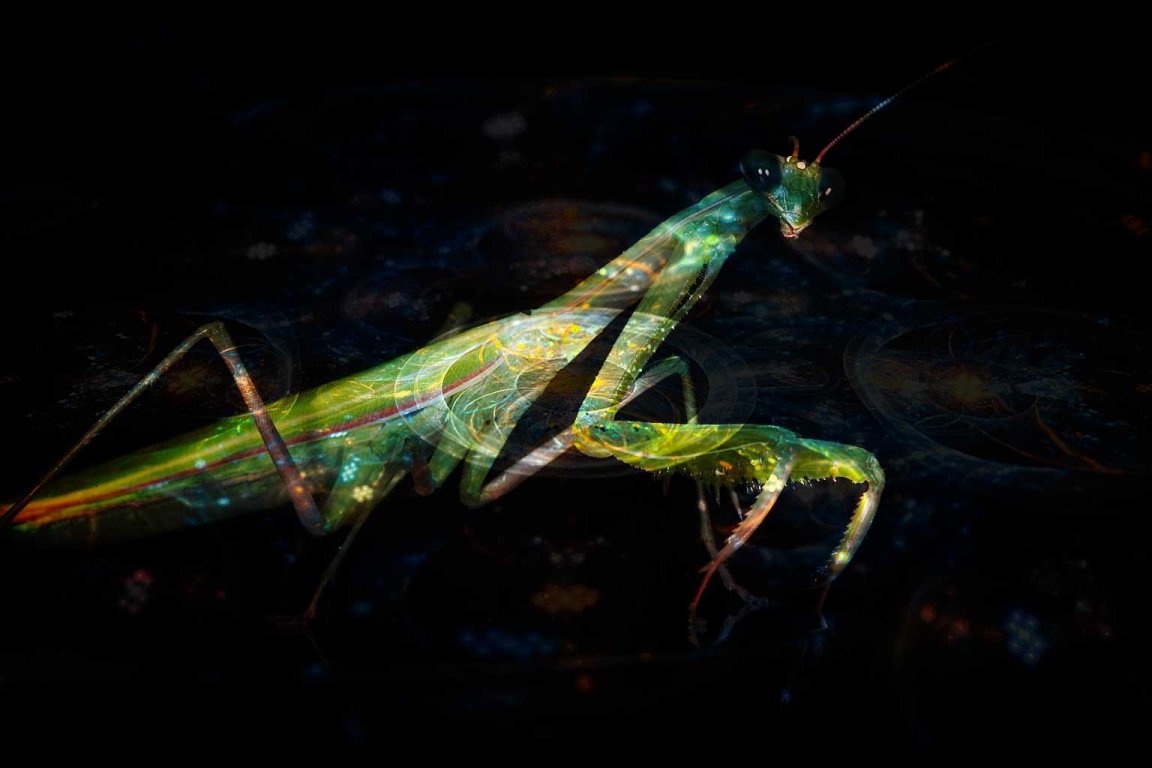
Scientists have gained new insight into the way praying mantises see the world, and this knowledge could potentially open up new avenues for computer vision.
Unlike other insects, praying mantises have a pair of large, forward-facing eyes. Humans and other primates use this kind of stereo sight setup to compare two slightly different viewpoints in order to gauge depth. However, it seems that praying mantises see things differently than we do.

Using beeswax as an adhesive, a team led by Vivek Nityananda at the University of Newcastle affixed lenses to praying mantises’ faces, being careful not to cause injury. One lens was green and the other was blue, a setup that allowed the scientists to control what each eye could see.
The scientists then projected films onto a screen in front of the insects. The first film featured a moving dot, which the mantises attacked, demonstrating that they could perceive depth if an object moved. Then, the dot was manipulated to move in two different directions, a disparity that would prevent human eyes from comprehending the image, but the mantises still attacked it.
This suggests that mantises have a previously unknown type of vision. It relies on targets moving around, but those movements don’t necessarily have to match between one eye and the other. It’s based on motion over time, rather than a direct comparison.

Being insects, mantises have fewer than a million neurons, far fewer than the 85 billion possessed by humans. However, thanks to this unique form of vision they use, they can still see in three dimensions, just like we can.
The researchers noted in a press release that their discovery could lead to the development of an algorithm based on mantis vision. Small robots, such as those used to respond to disasters, could use this algorithm to assess their surroundings without the need for a sophisticated “brain.”